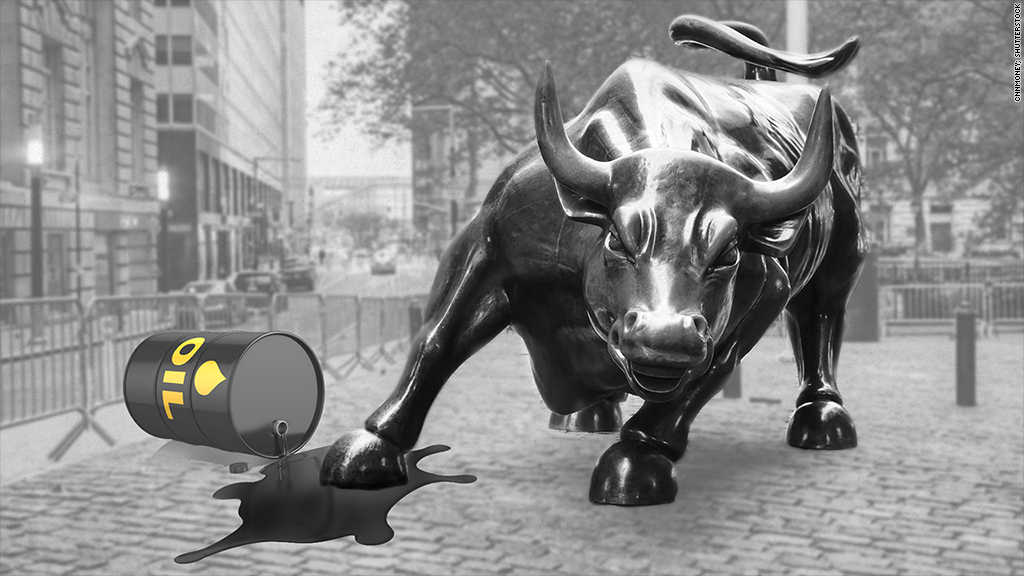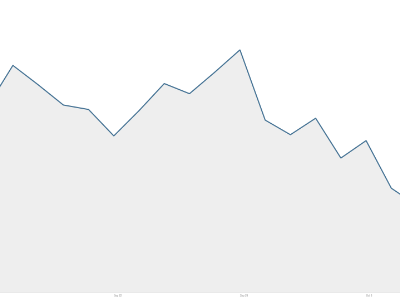
Crude oil tumbled below $84 a barrel on Friday for the first time since the 2012 Olympics in London.
If you have a car or truck, you're probably cheering the possibility of $3-a-gallon gas prices. But here's why you should also cringe.
Cheap oil prices are largely a reflection of some pretty scary developments in the global economy, especially in Europe. No one wants to see another recession.
The oil plunge is spooking investors, helping to fuel some of the recent extreme turbulence on Wall Street.
The current situation is a reminder that you should be careful what you wish for. Sure, consumers and businesses will benefit from friendlier prices at the pump. But it's being driven at least partially by negative factors.
"Energy was a star performer January through June. Now it's taking all the air out of the market," said Joe Saluzzi, co-head of trading at Themis Trading.
Related: Wall Street predicts GOP midterm victory
Demand fears spread: A confluence of factors have teamed up to open a trapdoor beneath the price of oil.
First, there are mounting worries about Europe's anemic economy and the ability of Super Mario and the European Central Bank to continue propping it up. Germany is teetering on the brink of recession, sending its stock market to one-year lows this week.
Shrinking economic activity in Europe and continued sluggishness in China translates to less demand for commodities, especially oil. Obviously, that's a big negative for oil prices.
What was your best investment? Share your story with CNN
Second, oil has been hurt by the resurgent U.S. dollar. Commodities frequently move in the opposite direction of the greenback, which is enjoying one of its best stretches in recent memory as the U.S. economy outperforms.

No supply shortages in U.S.: The other, often overlooked driver of lower energy prices is swelling supplies. U.S. oil production, fueled by the shale boom, is skyrocketing. Domestic output has spiked about 70% since 2008, according to the Energy Information Administration.
Surging U.S. output is a "supply-side shock," Marc Chandler, global head of currency strategy at Brown Brothers Harriman, wrote in a note to clients.
That helps explain why the average price of gas in the U.S. has dropped to $3.24 per gallon, compared with $3.43 a month ago, according to the AAA Fuel Gauge Report. Some states like Missouri, South Carolina and Tennessee are already flirting with $3 per gallon gas.
But it's not just the U.S. that's keeping prices low. Instead of dialing back on output to offset sinking prices, Saudi Arabia is actually ramping up production in an apparent effort to maintain overall revenues. It's also having the side effect of putting pressure on Russia, which relies heavily on oil revenue as well.

Stock market jitters: No matter the cause, the result is clear: energy stocks are getting burned. Just look at Thursday, when the S&P 500 basket of energy stocks careened 3.7%.
The energy group wasn't just the worst performer on Thursday. It's the biggest loser this month and for the year as well.
Exploration companies, which rely on lofty prices to justify expensive discovery efforts, are really taking it on the chin. Three of the four worst performing S&P 500 stocks in 2014 are energy exploration companies: Noble Corporation (NE), Transocean (RIG) and Diamond Offshore Drilling (DO).
Red ink is really drowning smaller energy stocks, which by definition are riskier and more susceptible to wild swings driven by oil prices. The Russell 2000 Energy index plummeted 6% on Thursday -- a dramatic move for a sub-index. It's down a whopping 26% over just the past month.
This experience highlights how different asset classes are interconnected. Selling in one corner of the market can quickly spill over into another, unrelated corner.
"Oil is lower... that should help consumers but consumer stocks are owned by the same guys (read: everyone) who is getting dinged by energy stocks," Michael Block, chief strategist at Rhino Trading Partners, wrote in a note on Friday. "Risk management is fun for the whole family."





